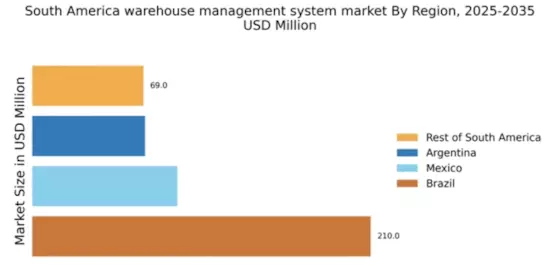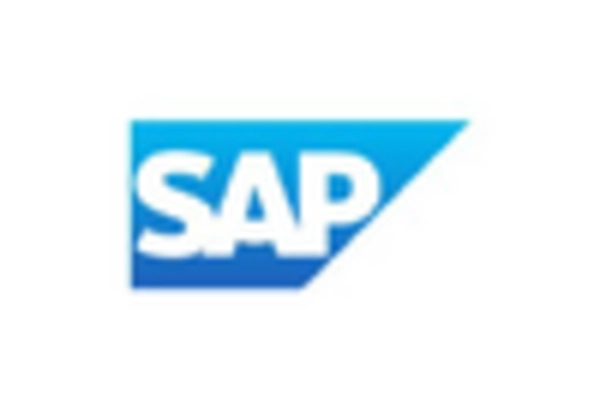Regulatory Compliance
Regulatory compliance is becoming an increasingly important factor for the warehouse management-system market in South America. Governments are implementing stricter regulations regarding safety, environmental standards, and labor practices. Companies must adapt their warehouse operations to comply with these regulations, which often necessitates the adoption of advanced management systems. By utilizing these systems, businesses can ensure compliance while optimizing their operations. In 2025, it is projected that compliance-related investments could account for up to 10% of total logistics expenditures, underscoring the role of warehouse management systems in facilitating adherence to regulatory requirements.
Rising E-commerce Demand
The surge in e-commerce activities across South America is driving the warehouse management-system market. As online shopping becomes increasingly popular, businesses are compelled to enhance their logistics and inventory management capabilities. This shift necessitates the adoption of advanced warehouse management systems to streamline operations, improve order fulfillment, and manage inventory more effectively. In 2025, the e-commerce sector in South America is projected to grow by approximately 20%, further emphasizing the need for efficient warehouse solutions. Companies are investing in technology to meet consumer expectations for faster delivery times and accurate inventory tracking, which is likely to propel the warehouse management-system market forward.
Supply Chain Optimization
The need for supply chain optimization is a critical driver for the warehouse management-system market in South America. Companies are increasingly recognizing the importance of efficient supply chain management to reduce costs and improve service levels. By implementing sophisticated warehouse management systems, businesses can enhance visibility across their supply chains, leading to better decision-making and resource allocation. In 2025, it is estimated that companies could save up to 15% in operational costs through improved supply chain practices. This trend indicates a growing reliance on technology to facilitate seamless operations, thereby boosting the demand for warehouse management systems.
Technological Advancements
Technological advancements are significantly influencing the warehouse management-system market in South America. Innovations such as artificial intelligence, machine learning, and robotics are being integrated into warehouse operations, enhancing efficiency and accuracy. These technologies enable real-time data processing and predictive analytics, which are essential for effective inventory management. As businesses strive to remain competitive, the adoption of these advanced technologies is expected to increase. In 2025, the market for warehouse management systems is anticipated to expand by 25% due to the integration of these cutting-edge technologies, highlighting their importance in modern logistics.
Growing Focus on Sustainability
The growing focus on sustainability is emerging as a key driver for the warehouse management-system market in South America. Companies are increasingly prioritizing environmentally friendly practices, which include optimizing warehouse operations to reduce waste and energy consumption. Implementing warehouse management systems can help organizations track their environmental impact and improve resource efficiency. In 2025, it is estimated that businesses could reduce their carbon footprint by up to 30% through sustainable warehouse practices. This trend indicates a shift towards greener logistics solutions, thereby enhancing the demand for innovative warehouse management systems.


















Leave a Comment